Apple's next major market for iOS may be automotive
Over the past two years, pundits have focused on living room TVs as the most likely new market for Apple to expand into, but evidence suggests that the company's next big step for iOS is more likely to involve the automotive market.
Eddy Cue, Apple's head of Internet software and services, was recently assigned ownership of the company's Siri and Maps initiatives (formerly managed as features of iOS by Scott Forstall).
He was also named to the board of directors of Ferrari, which cited Cue's experience in Internet-based commerce as a primary reason. But Cue's executive link between Apple and a specialty automotive company isn't the only evidence supporting the company's move into the car market.
The Siri and Maps projects Apple has recently brought to market appear tailor made for integrating iOS in the automotive industry, and a logical extension of "Made for iPod" integration programs Apple has worked on for over a decade.
Siri, profiled last year as one of the largest development teams at Apple, has been suggested to offer a $100 billion opportunity in the living room, along with FaceTime video chat. However, there are already voice activated "smart" TV products and video conferencing set top boxes that don't make any money.
So far, Apple has offered no suggestion that it's working on a TV strategy that involves Siri. In contrast, the company has already linked Siri to automotive applications in its announcement of Eyes Free this summer, a program that more tightly integrates iOS devices into cars, allowing users to issue voice commands that are answered audibly without even lighting up the device's screen.
That announcement happened to coincide with a new effort by the U.S. National Highway Traffic Safety Administration to focus on reducing "distracted driving," part of a series of measures that local and federal governments have taken to reduce deaths attributed to cell phone use while driving.
Living room offers little room for growth
Despite an incessant volume of unsupported HDTV-related Apple rumors over the past several years, little has been said about Apple's potential in the car market. This is particularly striking given the difference in potential revenues between the two, the relative demand for the types of technologies Apple has put together in iOS in both markets, and the work Apple has already announced and delivered in both regards.
In October 2006, Steve Jobs uncharacteristically previewed a prototype of the then-new Apple TV. It was subsequently released just a few months later at the unveiling of the original iPhone at the beginning of 2007.
Since then, while iPhone has become Apple's biggest product category internationally, Apple TV has remained a hobby, albeit a "beloved" one that is now (at least in unit sales) roughly as large as Apple's entire Mac business was 2006.
Margins on the current $99 Apple TV are much smaller than the Mac however, leaving the company limited room for commercially exploiting its current leadership position in selling TV set top boxes. Additionally, unlike the markets for MP3 players and smartphones, neither full HDTVs nor external set top boxes have ever been very profitable.
This discounts the idea that Apple would try to aggressively push iOS into the crowded TV space, where various existing devices have lost millions (TiVo) or even billions of dollars (Microsoft's Xbox/HD-DVD and Sony's PlayStation 3/Blu-ray) just trying to establish a platform for selling software or subscription services through the television.
That's not to say Apple can't make money in a market where its competitors have failed. Apple's iPad took off after a decade of Microsoft's failure with Windows Tablets, and three years later, Apple is still selling the most devices in a market where its closest competitors are pursuing an Xbox-like strategy of losing money in hardware in a bid to eventually develop a platform for selling software and services.
Nokia and the majority of Android smartphone makers are also losing money, and many PC makers are struggling to sell low-profit netbooks and low end notebooks and PC boxes even as Apple continues to sell premium priced, high end computers. However, the TV market is one of the few areas where even Apple has found it difficult to make any money.
Instead, the company has continued to earn minimal profits on Apple TV, essentially offering it as an accessory feature for playing iTunes content and for wirelessly streaming video from Macs and iOS devices via AirPlay.
In stark contrast to the rapid development of iPods, iOS and the OS X Mac desktop, Apple has focused limited resources on improving Apple TV, adding AirPlay and AirPlay Mirroring, Netflix, Hulu+ and integrated sports apps but never opening the door to unrestricted third party development.
Automotive looking a lot like smartphones before the iPhone
While most of the attention of pundits has focused on an imagined, potential TV market, Apple has openly pursued parallel efforts in the automotive industry, which today is very similar to the smartphone market prior to the launch of iPhone, much more so than HDTVs currently are.
"Smart" automotive products, ranging from car audio, maps and navigation to voice-based search and information systems, are not new. But like smartphones in 2006, smart car systems are generally perceived as expensive luxury items, often don't always work exceptionally well, and generally provide lackluster user interfaces.
Another similarity to the 2006 smartphone market: the car navigation system market is dominated by Nokia (with a small position held by Microsoft's WinCE-based Auto PC platform), while sales of the actual systems are tightly controlled by car makers themselves, just like the mobile carriers once owned the distribution and branding of phones.
Apple's iPod integration
Apple's origins in working with car industry also parallel its steps toward smartphones and iPod home theater. Initially, the company only offered ways to integrate its iPod with other vendor's devices, as Apple did for both with iTunes and its Bluetooth iSync data integration for various mobile phone models and PDAs like the Palm Pilot.
Beyond offering simple analog output, Apple began offering a rudimentary serial data interface for iPod. While early iPod models included a wired remote that used a ring of additional contacts surrounding the headphone jack, the third generation model introduced a special four pin serial interface next to the headphone jack. It also added the 30-pin Dock Connector, which supplied USB in addition to the 4 pins of simple serial lines for iPod remote functions.
Apple experimented with evolving serial control systems that enabled connected devices (such as a car stereo) to send basic signals to an iPod to start and stop playback, and eventually enter a playback mode where an external system (a dock accessory or a vehicle) could search, navigate and display track information on playing tracks, launch voice recording and perform other features.
Simple external playback controls were initially called the iPod Accessory Protocol. As features evolved, Apple added support for shuffle playback, depicting artist and title information, navigating songs within a playlist, and even showing album art under a system called AiR (Advanced iPod Remote). Apple has kept connectivity with remote devices as confidential as possible within its "Made for iPad" licensing program.
iPod integration in automotive
Within just a few years, economies of scale related to the volume of Apple's iPod sales and interest in iPod integration helped support a move from cheap, simple serial remote control to full support for the more complex and expensive USB. A parallel increase in the sophistication of automotive design also resulted in a dramatic expansion of support for built-in USB (or at least optional upgrades).
In 2004, Apple launched a program with BMW to provide USB iPod integration in its BMW and Mini vehicles, followed by a 2005 announcement of partnerships with Mercedes-Benz, Volvo, Nissan, Alfa Romeo and Ferrari.
This integration ranged from using FM transmitters to play audio out through the car's radio to full USB integration with steering wheel controls and instrument cluster displays, which completely took over control of a connected iPod.
At the time, Apple’s senior vice president of Worldwide Product Marketing Philip Schiller stated, “almost every car company in the world is working to integrate iPod into their cars in 2005. iPod customers want to take their entire music collection with them everywhere they go, including their car, so we’re excited to be able to work with so many leading automotive companies to provide customers with integrated solutions.â€
In 2007, Apple launched the new iPhone and iPod touch with support for similar iPod integration. It also began adding Bluetooth wireless connectivity, which allowed vehicles to control audio playback options without taking over control of the iPod (as USB iPod integration did), while also adding call integration. This year, Apple also added Bluetooth integration on its new iPod nano.
Car integration to wholesale replacement
In 2010, Apple added "iPod Out" as a feature of iOS 4, enabling second generation or later iOS devices to present Apple's classic iPod interface on a vehicle's display (as opposed to leaving the playback controls up to car manufacturers).
Again, BMW was an early partner of the feature, which hoped to replace the non-standard, often oddball interface presented by various car makers with the recognizable, consistent interface of the classic iPod.
By that point however, the success of the iPhone and iPod touch were replacing more basic iPods, so presenting the simple "classic iPod" as the only interface for vehicle playback ended up a short-lived objective. BMW subsequently launched even closer integration with iOS via its "BMW apps," a way for third parties to create car apps that could interact with features of iOS apps, including Facebook and Twitter, as well as iOS apps that connected Apple's devices with the car, something various car makers have done.
While BMW worked to integrate its iDrive car entertainment and navigation system with Apple's iPod and iOS devices, Apple delivered the iPad as its own big screen device capable of running more sophisticated apps in 2010. In parallel, Apple had been working on its own in-house mapping and navigation system in partnership with TomTom's Tele Atlas maps, as well as Siri, its voice assistant service released in 2011.
Rather than just offering iPod integration with a vehicle's entertainment system, Apple was now suddenly in a position to offer a vehicle's entire entertainment system with the release of Siri-integrated Maps in iOS 6 this summer.
Existing players in auto navigation systems
Apple is now set to begin muscling into a space Nokia has dominated since its acquisition of mapping company Navteq in 2007. Last year, Nokia further integrated and consolidated Navteq's formerly independent subsidiary operations into Nokia Location & Commerce.
But while Nokia's Navteq has signed up partnerships with a wide variety of car makers to license its Navteq maps for their navigation systems, Nokia's primary business in mobile phones began actively collapsing with the rapid shift toward smartphones, a factor Apple's iPhone had accelerated.
By 2011, Nokia was in such bad shape that the company announced a partnership with Microsoft to begin delivering Windows Phone devices. However, the failure of Windows Phone over the past two years has contributed to billion dollar losses at Nokia and the company's rapidly diminishing control over markets it once decisively held, leaving its mapping offerings very vulnerable just as Apple threatens to enter the market.
Microsoft's own Auto PC product (originally based on Windows CE and recently ported to the standard embedded version of Windows) has seen minimal adoption outside of a partnership with Ford branded as "Sync." Microsoft's automotive system provides phone and music integration with voice-based navigation and directions.
Eyes Free Siri
Alongside the introduction of iOS 6 at this summer's Worldwide Developers Conference, Apple also announced a new initiative it named "Eyes Free," ostensibly a way for car makers to further integrate iOS into their vehicles. The company listed familiar partners: BMW, General Motors, Land Rover, Jaguar, Audi, Toyota, Mercedes-Benz, Honda and Chrysler.
Eyes Free was demonstrated by Scott Forstall as a standard steering wheel button that invoked Siri running on an integrated iOS device, enabling drivers to perform voice assistant functions without even looking at a screen.
BMW's own in-house iDrive system, like similar systems developed by other car makers, presents navigation and entertainment options that are driven with a hand-operated dial control and shown on a vehicle's built-in screen. While it offers some voice-based system navigation, it relies upon simple phrases that must be issued in specific ways.
Apple's Siri, in contrast, is designed to respond to natural language questions and can adapt to questions or directives worded in various ways.
One issue for Siri is that it requires sophisticated noise reduction and audio processing to understand the speaker; on an iOS device, this is enhanced by multiple mics. In a car, road noise and a much greater distance between the driver and the device are a problem, but the Eyes Free program reportedly solves the problem (Apple isn't publicly articulating what this involves).
The company's Siri web page only says it is "working with car manufacturers to integrate Siri into select voice control systems," and notes, "to minimize distractions even more, your iOS device’s screen won’t light up. With the Eyes Free feature, ask Siri to call people, select and play music, hear and compose text messages, use Maps and get directions, read your notifications, find calendar information, add reminders, and more."
If Apple can convince as many vehicle makers to adopt Eyes Free as it has signed up to provide iPod integration, this will give the company a way to replace expensive vehicle entertainment and navigation systems with an alternative they're already familiar with: their iOS device.
If BMW and other major car makers hadn't already signed up for Eyes Free, it might be hard to understand why they'd be willing to risk the cannibalization of their own in-house vehicle entertainment systems, which typically include an iPod-like hard drive for music storage, an iPad like display, and maps with search and navigation. At the same time, car makers might be willing to delegate platform and software development to Apple because that's what their customers have been demanding.
Eyes Free is very simple: it essentially puts a Home button on a vehicle's steering wheel, so users can interact with iOS's Siri the same way they already can with their iPhone or iPad. The rest of the package includes basic Bluetooth integration for audio playback and phone calls. Realistically, car makers could still include the hardware they're already selling, but users would just interact with Siri most of the time rather than using the car's own hand-based menu navigation.
Eyes Free turns a blind eye to ads
Once users grow accustomed to using Siri for everything, however, the display screen and mapping systems sold by Nokia and Microsoft to car makers might go down the same path as modular car stereo systems, the market for which virtually collapsed as Apple's iPod became the preferred way to play music and podcasts.
This suggests Apple may expand the features of its iOS devices to make them more complete replacements for car entertainment systems (such as adding support for FM radio, for example, something that is already available in most 3G-capable iOS devices, but lying dormant in the devices' baseband chip). At the same time, it helps explain Apple's strategy for both Siri and Maps.
While observers are fixated with dramatizing a showdown between Google's free maps and Apple's new Maps service in iOS 6, it appears that Apple's real target isn't Google but rather Nokia's licensing fees for Navteq vehicle navigation systems. By enhancing Siri's capabilities, particularly in search, maps routing and voice-based calendar, tasks and messaging, Apple will be able to sell more differentiated hardware, and license those capabilities to car makers as an integration feature for car buyers.
Google, in contrast, will have a harder time duplicating Apple's Siri features (despite having a lead in maps and voice-based services) because it relies on advertising, something that's hard to monetize when users want distraction free, audible information.
Google's Android Maps+Navigation already relies on popup ads, but those don't offer advertisers the same value that paid search positioning offers on the web. It also seems unlikely drivers would want to listen to paid ads while navigating around town.
Apple's Eyes Free initiative is expected to begin rolling out in new cars early next year. It remains to be seen if Apple can duplicate its success with simple iPod car integration in the field of voice based, highly sophisticated iOS integration.
 Daniel Eran Dilger
Daniel Eran Dilger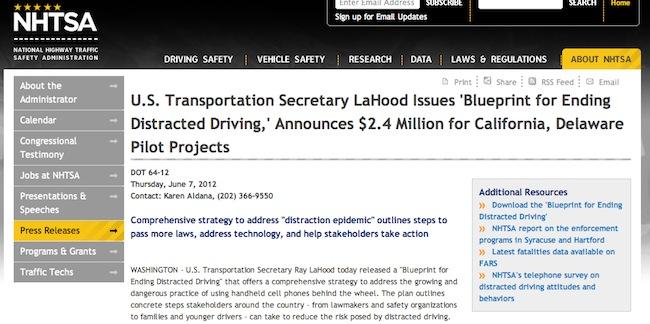
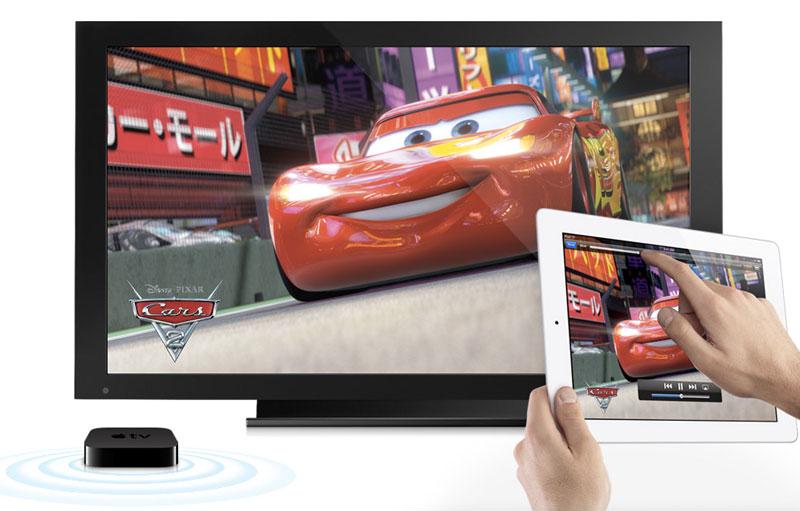
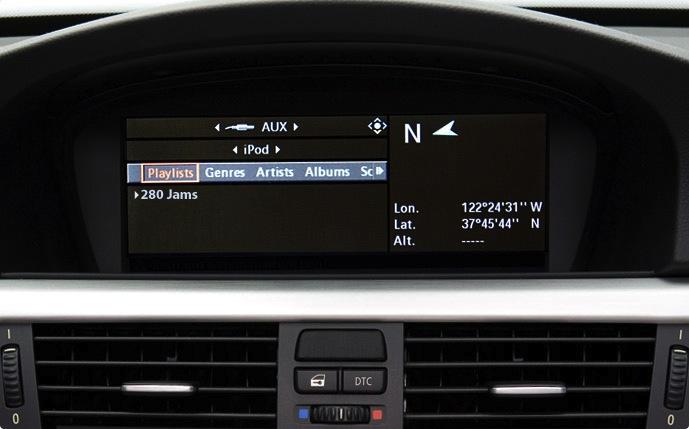
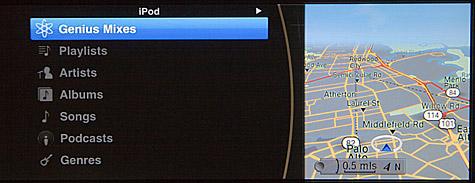
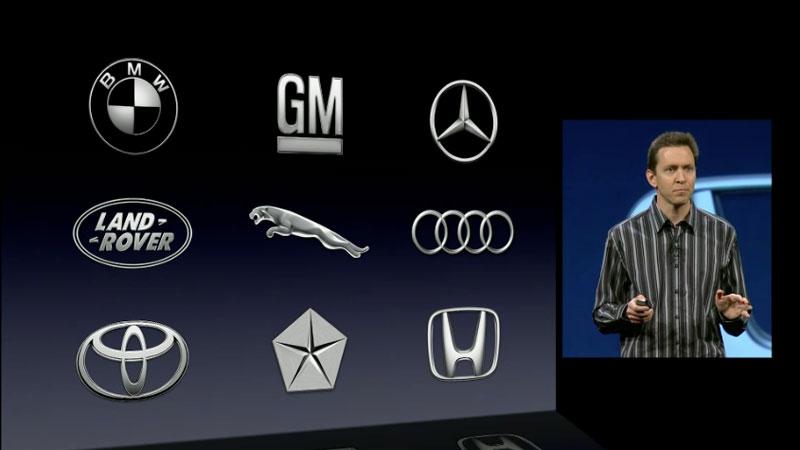
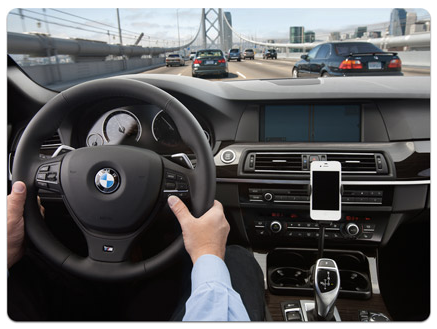
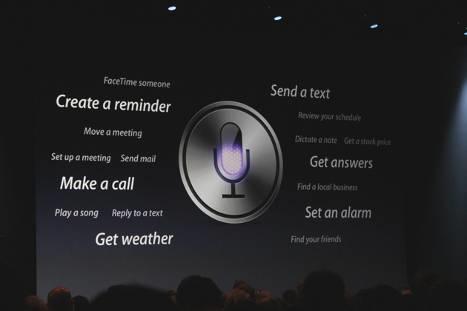














 Amber Neely
Amber Neely
 Thomas Sibilly
Thomas Sibilly
 AppleInsider Staff
AppleInsider Staff
 William Gallagher
William Gallagher
 Malcolm Owen
Malcolm Owen
 Christine McKee
Christine McKee










81 Comments
Great article.
AWW YEAH.
I don't really care about what everyone is thinking about it in this regard, I care about what it can become.
Picture this: no more frigging mechanical dials on your dashboard. It's just an LCD panel. What is shown there is customizable, based on YOU. You don't want to see something all the time, it's gone. And then everything shows up WHEN it's needed. So your oil's low? You get a yellow "low oil" banner on the top of the dashboard. Engine needs checked? A red "check engine" banner. Goes away when you don't need to see it. Yeah, my battery's charged. Great; that's space wasted. If I want to see it, I see it.
And then for the windshield, augmented reality. Have your GPS directions pasted right onto the world around you! No more looking down between your hands (because it could just as easily be in the dash prior to this), there's a line right on the road as you're driving. Chip built right into the car instead of paying however much for those standalone things or using your iDevice's. Siri, built into the car (and free with the car for its life), speaks your directions through the car stereo, and is connected to your iPhone via Bluetooth for calls.
This is something that I see apple at in 30 years, not now who wants a iOS car, apple has better things to do.
I'm all for Apple making bigger inroads into the automotive sector but it still shouldn't ignore the living room. There's still big potential there.
The problem with the current implementation of Siri is that it requires a network connection. Perhaps with more processing power and storage, it will be able to do the processing on the client side.